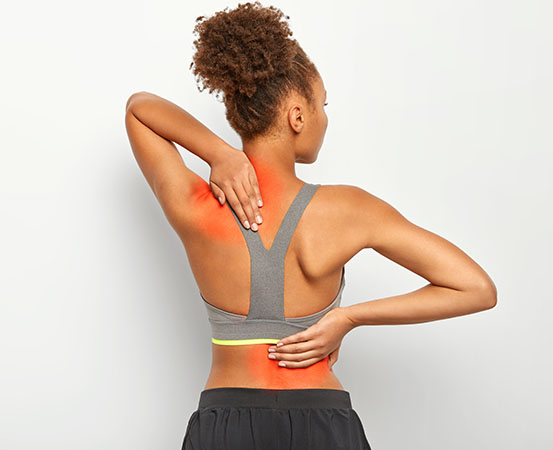
Your daily workout regimen is going great along with a decently active office routine, including an occasional walk and regularly taking the stairs. Despite all this, a localised pain appears in the leg muscles, leading to stiffness and discomfort. The pain is hard to pinpoint and since its severity is less, you are inclined to brush it off as muscle stiffness. Experts say this could be myofascial pain syndrome (MPS), whose onset is sudden.
Myofascial pain in the muscle is starkly different from that experienced in other body parts. For instance, the ache in the skin is felt through receptors in the tissue which register touch, pain, temperature and pressure. The muscles do not have such receptors, so pain experienced is diffused and hard to locate.
What is myofascial pain syndrome?
“Fascia is a membrane around the muscle,” says Saurav Shandilya, chief physiotherapist at Sankalp Physical Therapy, Bengaluru. “Normally, when pressure is applied on a muscle or a body part is moved then the muscle doesn’t hurt. But if there is pain when moving then it is not normal. It can be myofascial pain or myofascial pain syndrome.”
Some signs can help identify myofascial pain.
“An individual may not feel pain everywhere in the muscle but when a medical examiner applies pressure then there could be certain points where pain is felt,” adds Shandilya. “These are called tender points [trigger points] — tiny areas which go into spasm because of reduced flow of blood and significant reduction in the supply of oxygen. As a result, the muscles cannot relax by themselves.”
Myofascial pain syndrome is localised but can spread and become severe if ignored or not treated. In extreme cases, it can lead to postural issues.
What causes myofascial pain syndrome
Knotting or inflammation around the trigger points are the primary cause of MPS.
Trigger points are defined as tender spots in taut bands of hardened muscle which produce local and referred pain along with other symptoms. A trigger point is composed of numerous contraction knots which appear as a segment of muscle fibre.
“Muscles having trigger points would not want to work, contract or stretch,” says Shandilya. “So other muscles around them have to work more and overtime to compensate. This leads to other muscles also developing trigger points, and this is how the pain starts spreading.”
Other causes of myofascial pain syndrome are repetitive movement, bad posture, exposure to cold environments, emotional stress and muscle inadequacies (short or weak muscles).
How to manage myofascial pain
The most common warning sign of myofascial pain syndrome is pain experienced in a particular part of the body while working. The pain subsides (or the muscles involved relax) with rest or medication, but it recurs or worsens during stress and work.
If ignored, the pain may spread from the affected muscle region and become debilitating. It can lead to chronic pain, postural issues and also affect the spine.
Here are some tips to manage MPS:
- Consult a medical expert or physiotherapist who will identify the trigger points and prescribe exercises or therapy to release the knots.
- Use an ergonomic chair and table.
- Maintain a proper posture.
- Follow an active lifestyle and exercise regularly to strengthen the affected areas.
- Follow relaxation methods like meditation to relieve stress and attain emotional balance.
- Give up any habit that produces constant pressure on the muscles.
Takeaways
- Myofascial pain syndrome (MPS) is characterised by localised pain whenever that part is moved or an external pressure is applied on the muscle.
- If ignored, MPS can lead to chronic pain and affect posture.
- An individual experiencing myofascial pain should visit a physiotherapist who will diagnose and prescribe the appropriate mode of treatment, including physical therapy and exercises to strengthen the muscles.

















